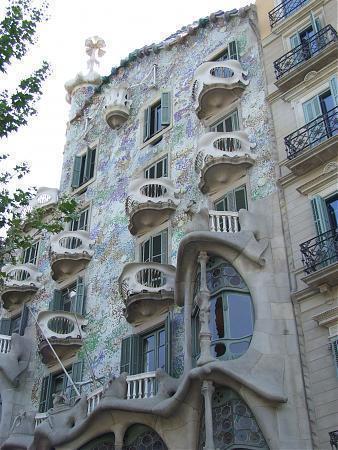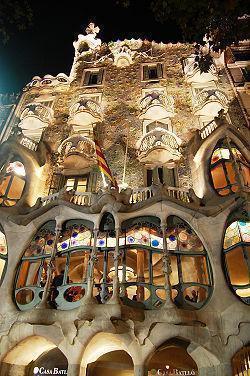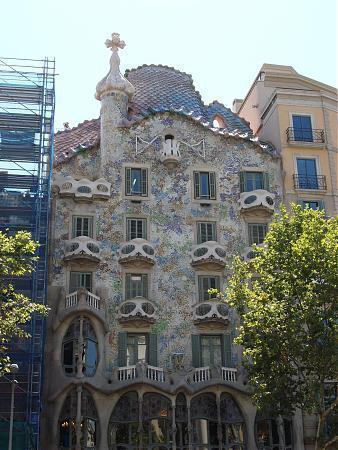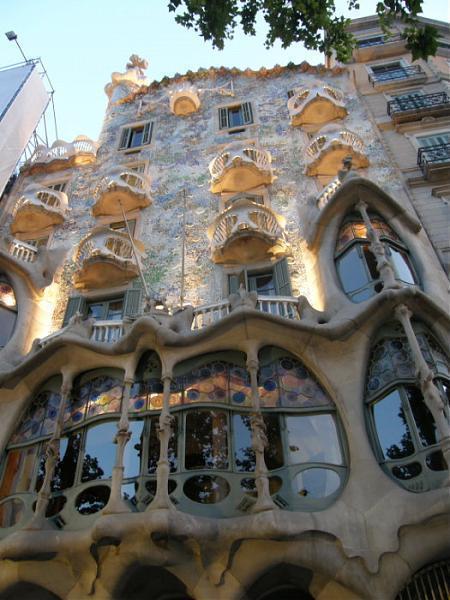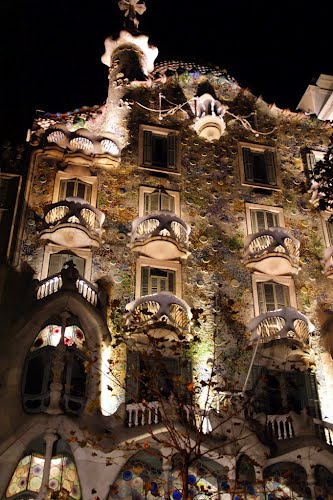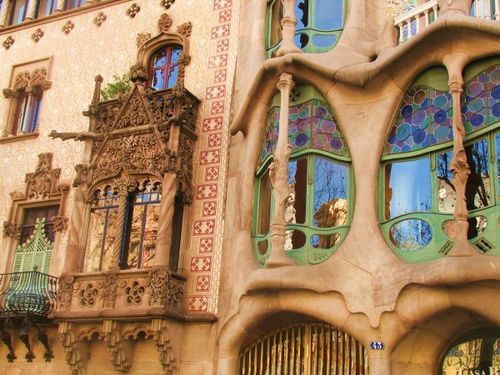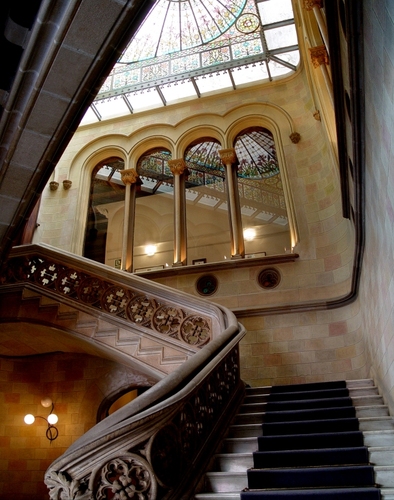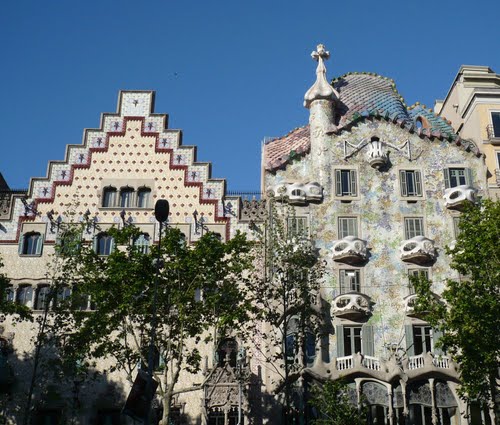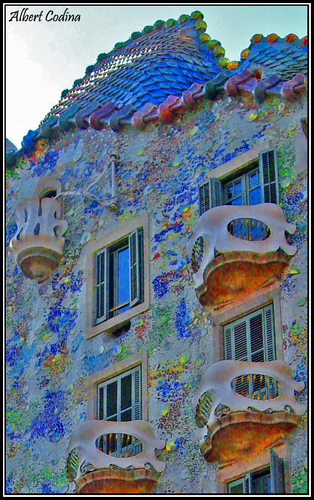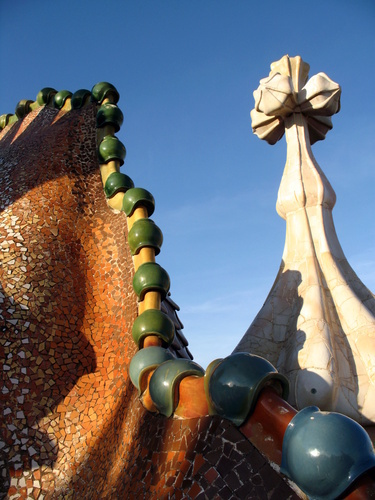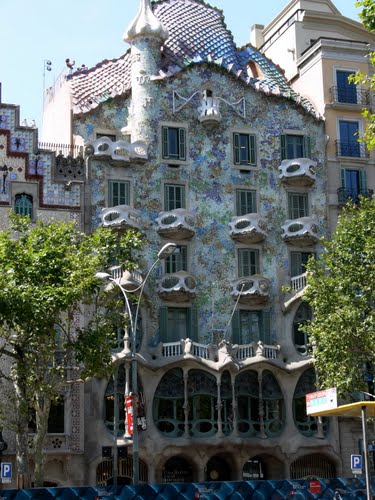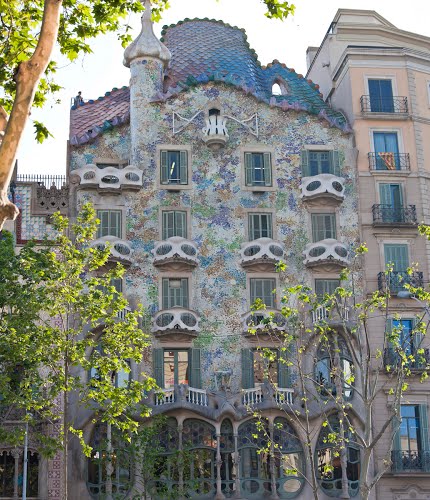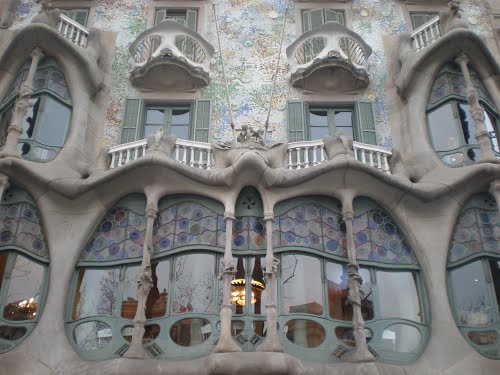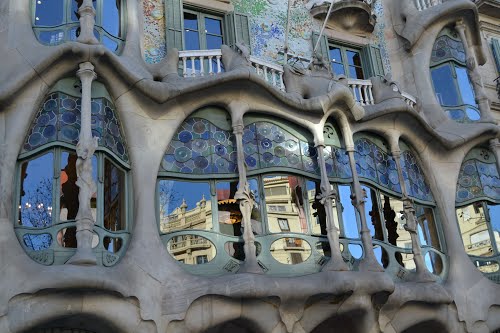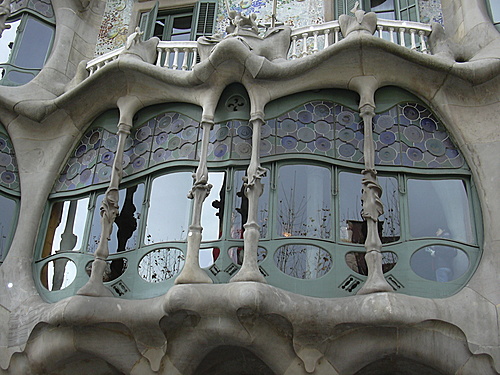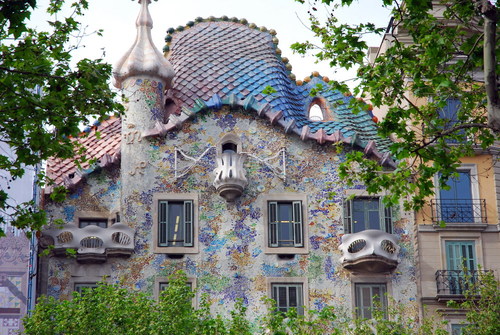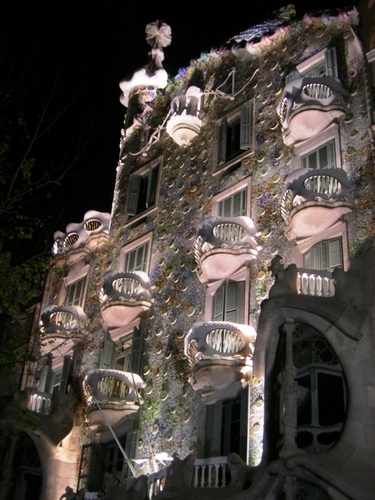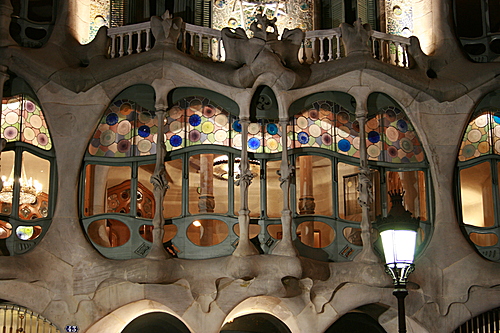Casa Batllo is a renowned building located in the centre of Barcelona and is one of Antoni Gaudi’s masterpieces. A remodel of a previously built house, it was redesigned in 1904 by Gaudi and has been refurbished several times after that. Gaudi's assistants Domenec Sugranes i Gras, Josep Canaleta and Joan Rubio also contributed to the renovation project. The local name for the building is Casa dels ossos (House of Bones), as it has a visceral, skeletal organic quality.
Like everything Gaudi designed, it is only identifiable as Modernisme or Art Nouveau in the broadest sense. The ground floor, in particular, has unusual tracery, irregular oval windows and flowing sculpted stone work. There are few straight lines, and much of the facade is decorated with a colorful mosaic made of broken ceramic tiles. The roof is arched and was likened to the back of a dragon or dinosaur. A common theory about the building is that the rounded feature to the left of centre, terminating at the top in a turret and cross, represents the lance of Saint George, which has been plunged into the back of the dragon.
History
Initial construction (1877)
The building that is now Casa Batllo was built in 1877 by Antoni Gaudi, commissioned by Lluis Sala Sanchez. It was a classical building without remarkable characteristics within the eclecticism traditional by the end of the 19th century. The building had a basement, a ground floor, four other floors and a garden in the back.
Batllo family
The house was bought by Josep Batllo in 1900. The design of the house made the home undesirable to buyers but the Batllo family decided to buy the place due to its centralized location. It is located in the middle of Passeig de Gracia, which in the early 20th century was known as a very prestigious and fashionable area. It was an area where the prestigious family could draw attention to themselves.
In 1906 Josep Batllo still owned the home. The Batllo family was very well known in Barcelona for its contribution to the textile industry in the city. Mr. Josep Batllo I Casanovas was a textile industrialist who owned a few factories in the city. Mr. Batllo married Amalia Godo Belaunzaran, from the family that founded the newspaper La Vanguardia. Josep wanted an architect that would design a house that was like no other and stood out as being audacious and creative. Both Josep and his wife were open to anything and they decided not to limit Gaudui. Josep did not want his house to resemble any of the houses of the rest of the Batllo family, such as Casa Pia, built by the Josep Vilaseca. He chose the architect who had designed Park Guell because he wanted him to come up with a risky plan. The family lived on the Noble Floor of Casa Batlló until the middle of the 1950s.
Renovation (1904-1906)
In 1904 Josep Batllo hired Gaudi to design his home, at first his plans were to tear down the building and construct a completely new house. Gaudi convinced Josep that a renovation was sufficient and was also able to submit the planning application the same year. The building was completed and refurbished in 1906. He completely changed the main apartment which became the residence for the Batllo family. He expanded the central well in order to supply light to the whole building and also added new floors. In the same year the Barcelona City Council selected the house as a candidate for that year’s best building award. The award was given to another architect that year despite Gaudi’s design.
Refurbishments
Josep Batllo died in 1934 and the house was kept in order by the wife until her death in 1940 . After the death of the two parents the house was kept and managed by the children until 1954. In 1954 an insurance company named Seguros Iberia acquired Casa Batllo and set up offices there. In 1970, the first refurbishment occurred mainly in several of the interior rooms of the house. In 1983, the exterior balconies were restored to their original colour and a year later the exterior façade was illuminated in the ceremony of La Merce.
Multiple uses
In 1993, the current owners of Casa Batlló bought the home and continued refurbishments throughout the whole building. Two years later, in 1995, Casa Batlló began to hire out its facilities for different events. More than 2,500 square meters of rooms within the building were rented out for many different functions. Due to the building's location and the beauty of the facilities being rented, the rooms of Casa Batlló were in very high demand and hosted many important events for the city.

